One of the main causes for culling breeding sows on farms before the end of their reproductive cycle are locomotor problems, which are usually lumped under the generic description “lameness”. Taking into consideration the farms apt for use in this study taken from the PigCHAMP database (141 farms, 84000 sows), and data from the year 2010, out of a total of 34583 female deaths, 2572 were registered with lameness as the cause, that is to say, 7,4% of total sow deaths were due to locomotor problems. Of these deaths, 160 were sows that died or had to be culled on the farm, while the rest were sent to the slaughterhouse. That is to say, 6.2% of deaths due to “lameness” correspond to sows that have died on the farm (normally sows that cannot be put onto the truck and have to be euthanatized), and the rest are sows that have been sold.
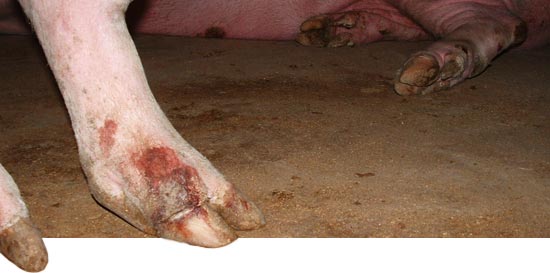

The first impression is that 7.4% of the total of sows slaughtered is not an excessive percentage and therefore isn’t as important a cause as previously thought, but in this case the question is, are really all the sows whose main reason for removal is a locomotor problem registered with this cause? In this respect would have to make two considerations:
- How many sows die without registering the cause? Of the 34583 total deaths mentioned earlier, 6103 were registered without cause (“unknown” cause, or “other”), that is, in 17.6% of the sows’ deaths no cause was registered. It is logical to think that part of these deaths correspond to locomotor problems.
- How many deaths were registered with a different cause, although the main cause was locomotor problems? A typical case involves sows that are culled due to “body condition”, when really the main cause is a locomotor, leg positioning problem which doesn’t allow the sow to feed herself correctly. There are also other registered cases, such as “lack of estrus”, or “abortion”, that perhaps have their origin in locomotor problems. For example, a gestating sow that ends up invalid, and ends up aborting and later being slaughtered. On some occasions this sow would be registered with a cause listed as “abortion”.
Therefore, the first point of revision in order to carry out a correct study of deaths due to locomotor problems would be the correct registration of cause.
If we analyze deaths due to lameness according to the number of farrowing, we obtain the following:
Graph 1.- Percentage of deaths due to lameness according to number of farrowing
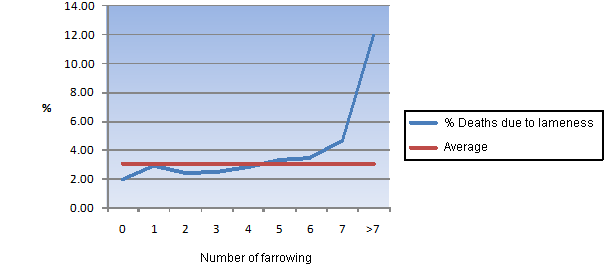
Source: PigCHAMP database Pro Europa SL, 2010
We can see a growing tendency as the cycles go on, until the percentage shoots up in older sows. This is logical, since, for the most part, sows that have spent their whole lives reproducing have become worn out. On the other hand, when looking at those with a higher number of farrowings there is more strictness when culling a sow as soon as any signs of problems are shown.
As far as the state of sows at the time of death, we can gather the following:
Table 2.- Analysis of sow deaths due to lameness, broken down by nº of farrowing and bodily state at the time of death.
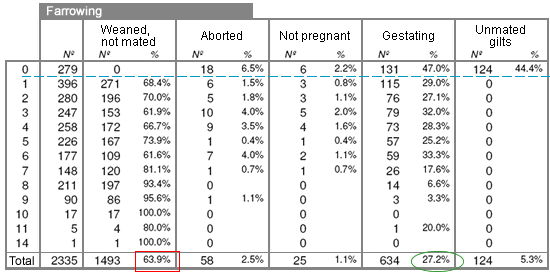
The majority of deaths occur in weaned sows, that is to say, after weaning they are sent to slaughter. However, the percentage of gestating sows that have to be slaughtered is high. And, although it is a smaller percentage, 11.9% of deaths are produced in sows in cycle 0, before their first farrowing. These sows suppose an important overrun for farms, since they bring in no profits.
It is convenient to measure the consequence of any gestation loss, always on non productive days, since we can get an idea of the real weight of the problem on the farm. In this case, analysis shows the following:
Table 3.- Analysis of NPD of sows slaughtered due to lameness.
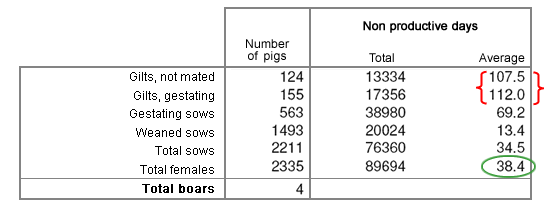
We can see the average NPD that sows culled due to lameness accumulate is over one month, actually 38.4 days. Logically, the animals that accumulated the most NPD were the gilts.
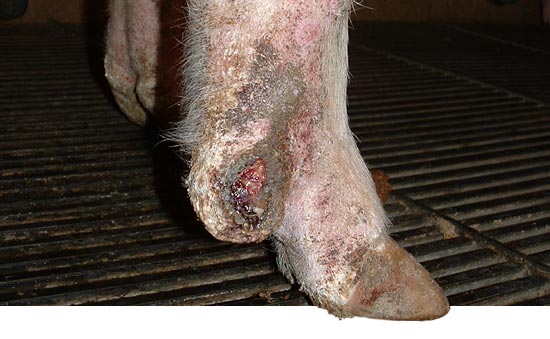
As we can see based on previous data, locomotor problems are serious, multi-factorial problems that aren’t well registered on farms, but for the most part are correctable. In the next article we will delve deeper into aspect like correct registration of the problems, causes, and prevention.




